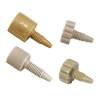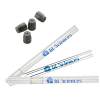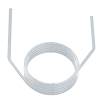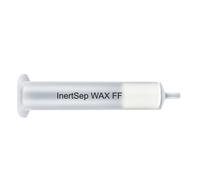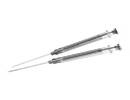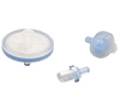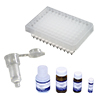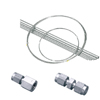Basics of Gas Chromatography
2-5 Precautions when Using Capillary Columns
2-5-1 Extending the Column Life
Chromatography columns are degraded by temperature, oxygen, and the injected samples. Oxygen contamination, especially at high temperatures, can fatally damage columns. To extend the life of the column, the following precautions must be taken.
Temperature
Do not use at higher temperatures than necessary. High temperatures cause softening and degradation with the formation of cyclic siloxane. Cyclic siloxane is eluted as column bleed.
Oxygen
Oxygen contamination should be avoided whenever possible. If the column contains oxygen and its temperature is raised, curing degradation will occur. The polymer becomes very rigid and eventually ceases to serve as a liquid phase.
Samples
Non-volatile materials remaining in the analytical column can lead to column degradation. Matrix should be removed by pretreatment or use of a pre-column to prevent non-volatile substances in the sample from entering the column. Strong acids and alkalis also destroy the liquid phase of the column.
2-5-2 Column Regeneration
Columns showing performance degradation can be regenerated by conditioning, removal of contaminated parts, and solvent cleaning.
Conditioning
Attach the detector side of the column to the inlet and allow conditioning for an extended period of time below the maximum operating temperature of the column.
Removal of Contaminated Parts
Cut 50 cm to 1 m off the inlet side of the column to remove contaminated portions introduced by non-volatile substances and other unwanted products. The column can be easily cut with a ceramic tube cutter or a carbide tip pen.
Solvent Cleaning
Cross-linked columns can be washed with solvents but the process should be slow and gentle to avoid damaging the liquid phase. After cleaning, flush out the inert gas and thoroughly dry the column. Note that if there are functional groups other than methyl groups, such as phenyl or cyanopropyl groups, the wash may change the retention ratio.


